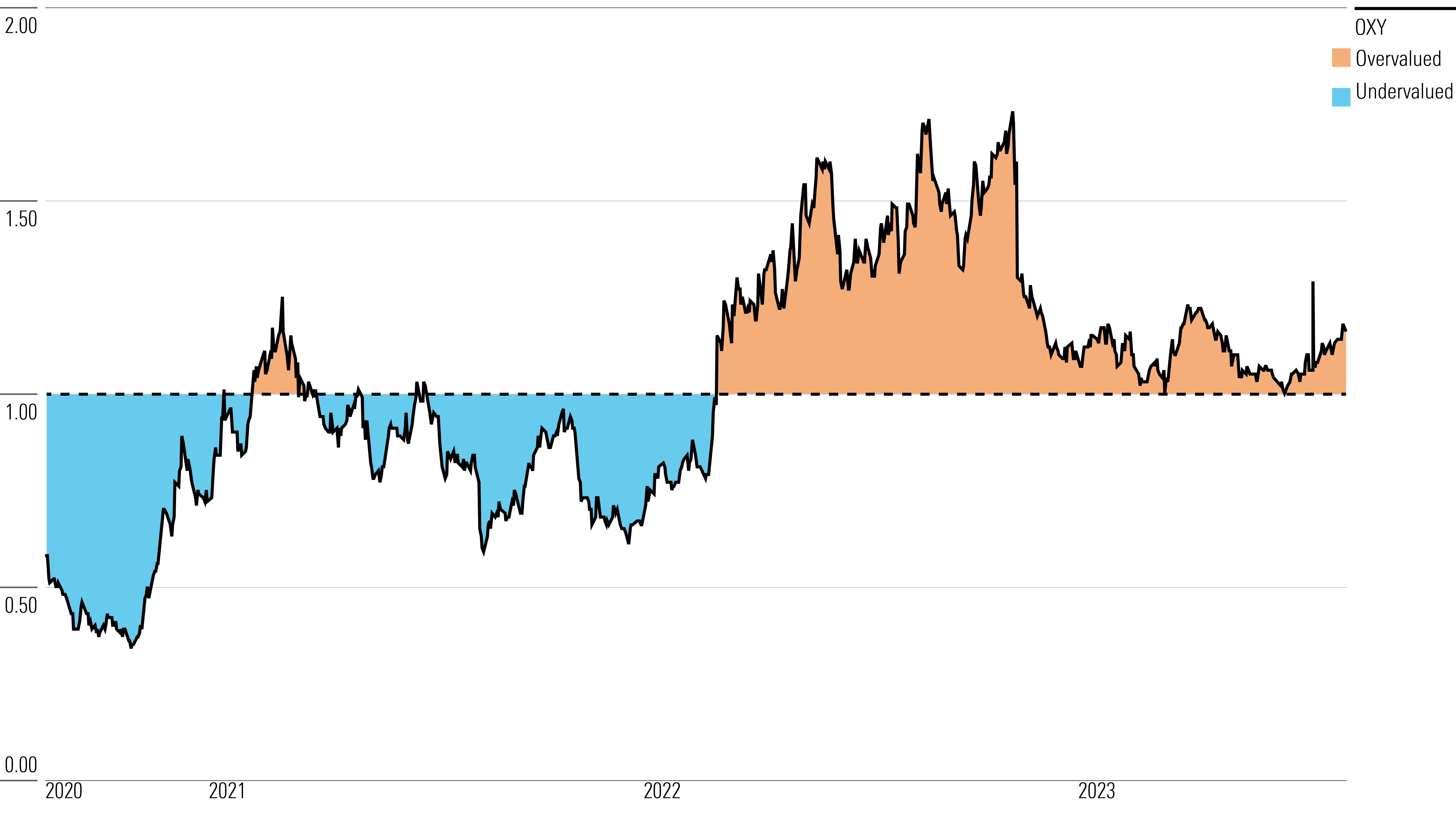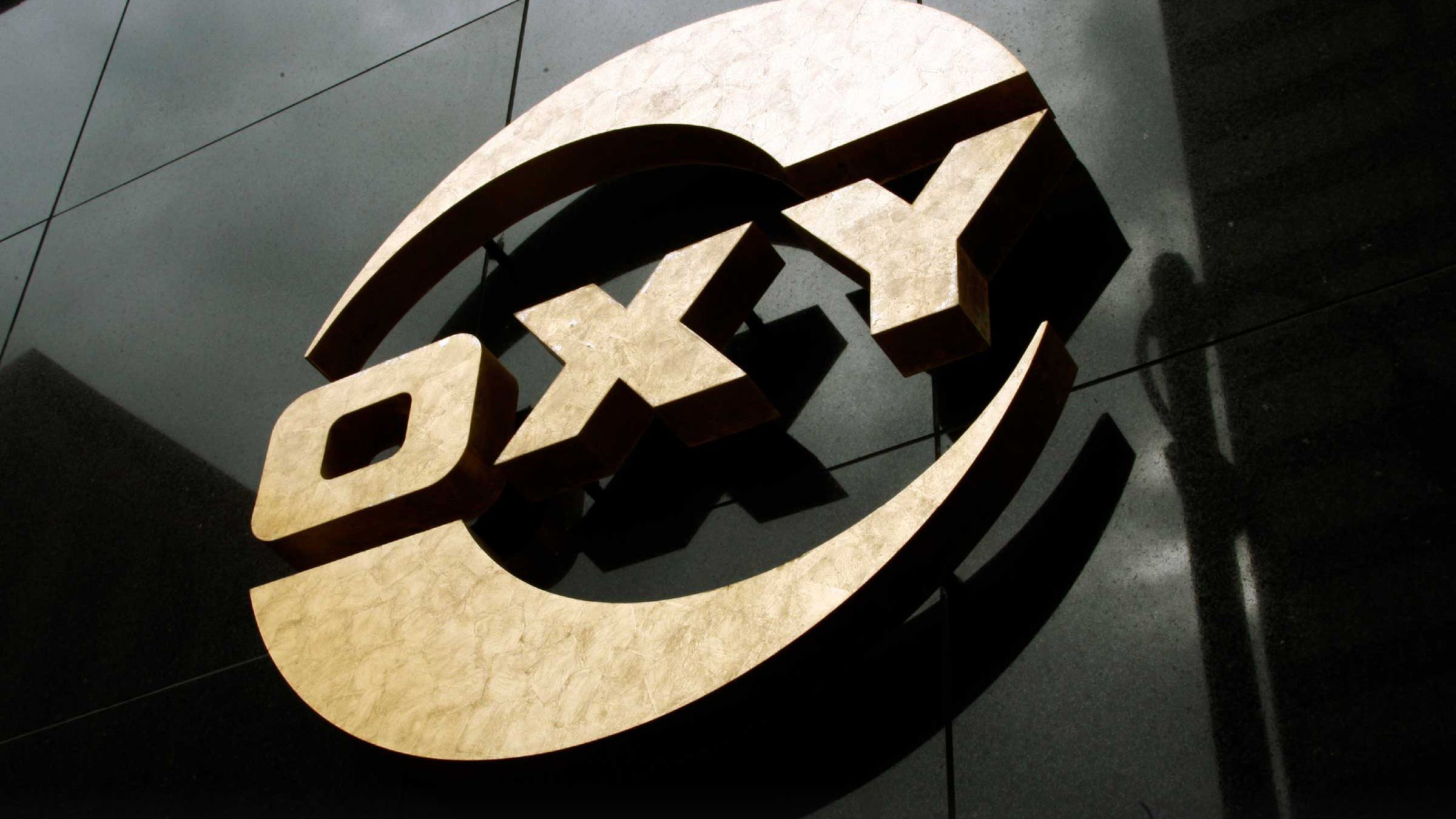Occidental Petroleum OXY It released its earnings report for the second quarter on August 3 during trading hours. This is Morningstar’s view of Occidental’s earnings and stock.
Morningstar key metrics for Occidental Petroleum
What we saw in Occidental Petroleum’s second-quarter earnings
Domestic asset superiority: Occidental Oil & Gas delivered the equivalent of 711,000 barrels of oil per day in the second quarter, beating midpoint and higher estimates by 3.6% and 1.8%, respectively. All of the local assets contributed to the superior performance, but the operations in the DJ Basin were particularly impressive.
Successful operational performance: Promoting oil wells in the DJ Basin (using the company’s leading technologies in the Permian Basin) has enabled Occidental to raise guidance and may indicate better-than-expected production potential, although other companies have been showing similarly impressive developments.
Oil bulls: Our fair value estimate is driven by a long-term oil price assumption of $60 per barrel for Brent and $55 per barrel for WTI. Occidental may look more attractive to investors with more bullishness on oil.
Occidental fair value estimate
With its 3-star rating, we believe Occidental’s stock is fairly valued compared to our long-term fair value estimate.
Our primary valuation tool is our net asset value projections. This bottom-up model displays cash flows from future drilling on a single-well basis and rallies across the company’s inventory, discounting the company’s weighted average cost of capital. Cash flows from current (core) production are included assuming a hyperbolic decline rate. Our assessment also includes the current value from a market viewpoint of the company’s hedging program. We assume that oil prices (WTI) in 2023 and 2024 will average $71 per barrel and $66 per barrel, respectively. In the same periods, natural gas prices (Henry Hub) are expected to average $2.90 per thousand cubic feet and $3.60 per thousand cubic feet. Final prices are determined by long-term mid-cycle price estimates (currently $60/bbl, $55/bbl, $3.30/bbl natural gas).
Based on this methodology, our fair value is estimated at $56 per share. This corresponds to a company value/EBITDA multiple of 5.3x and 4.8x for 2023 and 2024, respectively. Our production forecast for 2023 is 1.19 million barrels of oil equivalent per day, which is in line with guidance. This drives 2023 EBITDA to $14.1 billion, and we expect cash flow per share to be $11.50 in the same period. Our 2023 estimates for production, EBITDA, and cash flows per share are 1.21 million boe/day, $13.7 billion, and $10.98, respectively.
Read more about Occidental’s fair value estimate.

Economic trench classification
We don’t give Occidental an economic moat.
Like all oil and gas exploration and production companies, Occidental is exposed to a host of potential environmental, social and management issues that could hurt its ability to generate strong returns. The most important ESG exposures are greenhouse gas emissions (whether from extraction processes or downstream consumption), other emissions, effluents, and waste (primarily oil spills).
Oxy has reliably established itself as the industry’s net-zero leader, and its unit Low Carbon Ventures has ambitious plans to build 70-135 direct air capture stations in the regions in which it operates. The first of these, to be built in the Permian Basin, is expected to come online in 2024. Unlike most of its peers, Oxy has adopted an explicit net-zero goal including Scope 3 emissions, and aims to reach that milestone before 2050. Enjoy The company has an advantage over its peers in this area because it benefits uniquely both from its chemicals business, which can supply potassium hydroxide and PVC for its plants, and from its improved oil recovery process (a technology that boosts productivity in mature oil fields by injecting carbon dioxide into reservoir, creating a sink for carbon dioxide to be captured thus eliminating sequestration concerns).
But greenhouse gas emissions are still a threat. Consumers are becoming more averse to fossil fuels, which increases the possibility of widespread substitution away from it. And the industry’s notoriety makes value-destroying regulatory intervention more likely in the future (think fracking or carbon taxes). And while Oxy can reasonably claim to aim to be a better corporate citizen than most, given its comprehensive carbon capture schemes, the resulting impact of such interventions on oil prices would be equally painful. Such a scenario is not likely to be sufficient to be included in our base case projections, but given that the impact would be material, it further erodes the company’s potential.
Read more about Occidental’s moat rating.
risk and uncertainty
Given the volatility of the oil markets at this time, we are giving Occidental a very high uncertainty rating.
As with most exploration and production companies, a deteriorating outlook for oil and natural gas prices would put pressure on their profitability, reduce cash flows, and increase leverage. Increasing federal taxes, or eliminating the intangible drilling deduction enjoyed by US companies, could impact profitability and lower our fair value estimates.
Material exposures to ESG create additional risks for exploration and production investors. In this industry, the most significant exposures are greenhouse gas emissions (whether from extraction processes or downstream consumption), other emissions, effluents, and waste (primarily oil spills). In addition to the reputational threat, these issues could drive climate-conscious consumers away from fossil fuels in greater numbers, eroding demand in the long term. Climate concerns could also lead to regulatory interventions, such as banning fracking, suspending drilling permits, and possibly even direct taxes on carbon emissions.
Finally, as a US third-party product, Oxy has an additional vulnerability. The company’s drilling campaign in the Gulf of Mexico requires ongoing approvals from the Department of the Interior. Since this entity is controlled by the executive branch of the United States government, it can suspend licensing activity without congressional approval. In the past, President Joe Biden has hinted at legislation blocking future oil and gas permits, which could hurt Oxy’s growth in the Gulf.
Read more about Occidental risks and uncertainties.
says OXY Bulls
- Oxy has a dominant position in the Permian Basin, which is the cheapest source of production in the US and is expected to be a major driver of growth in the next few years.
- Oxy’s traditional assets in the Gulf of Mexico and the Middle East complement its shale operations nicely by generating stable cash flows from the assets with a much lower underlying decline rate.
- The low carbon projects segment is synergistic with Oxy’s chemical business, and Oxy EOR’s holdings and expertise give it a natural advantage in carbon capture.
says OXY BEARS
- Although the Oxy-Permian wells show high initial production rates, they also decline very quickly.
- The Anadarko acquisition boosted Oxy’s Permian footprint but left it with other assets it didn’t really want, like its stake in WES Midstream or its operations in North Africa.
- Oxy will have to share the spoils from its ambitious carbon capture plans, and since it doesn’t provide financing or engineering, it will have to give up a large business interest.
This article was compiled by Sakth Tirumala.


